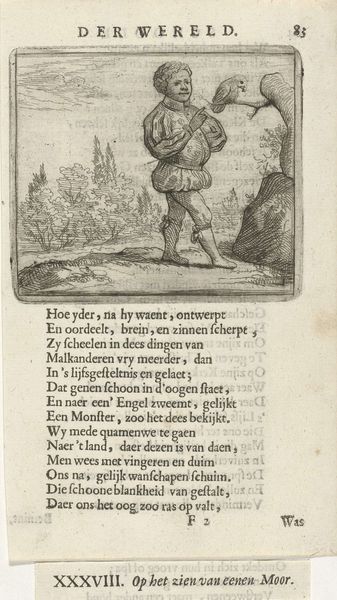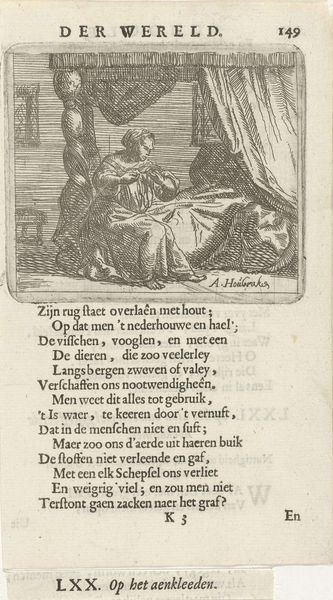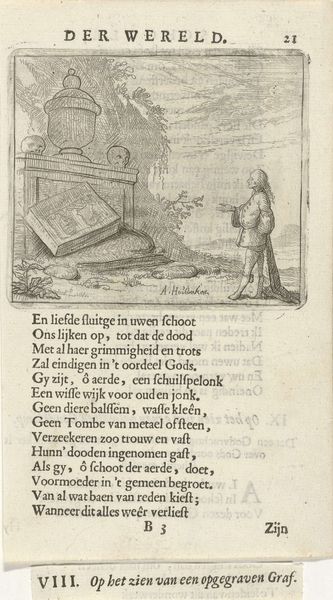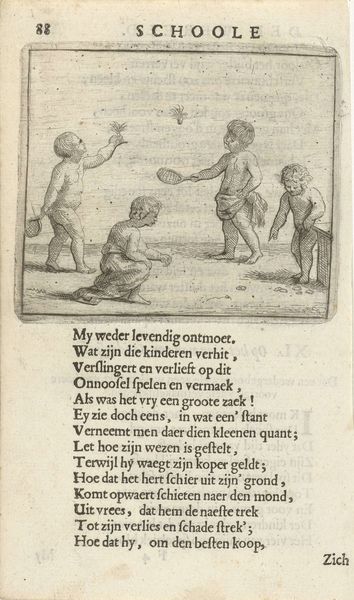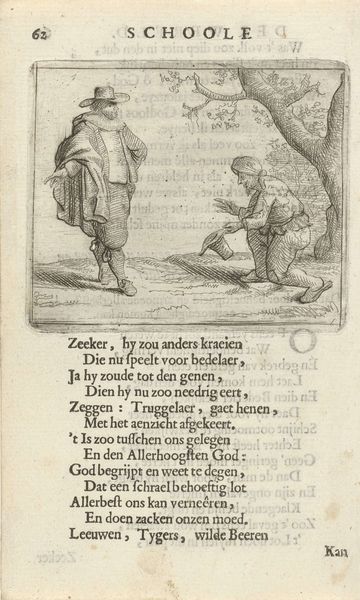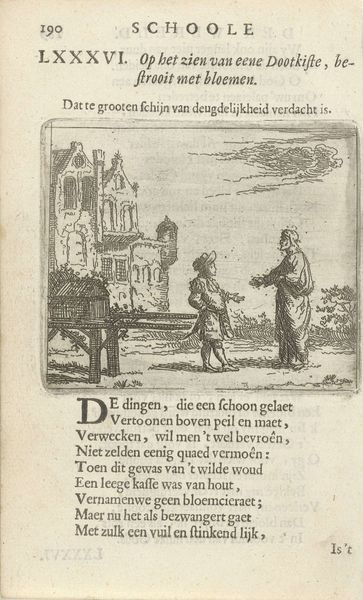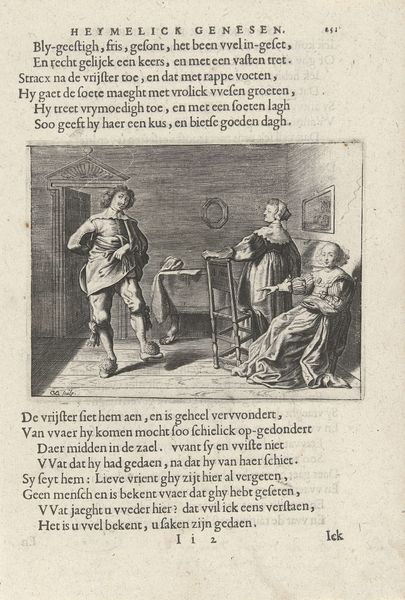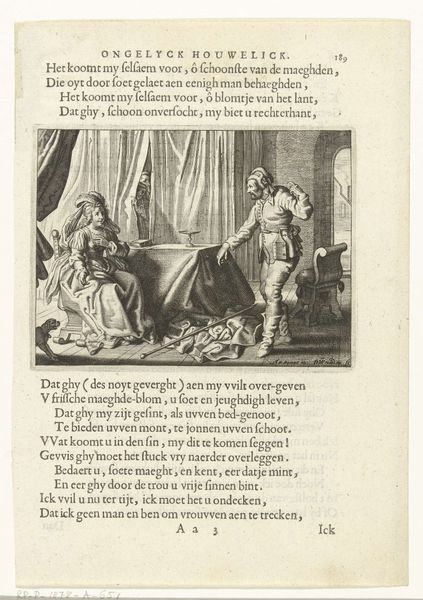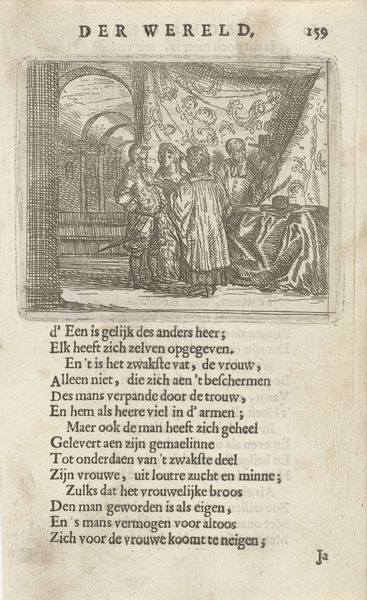
print, etching, engraving
#
narrative-art
#
baroque
# print
#
etching
#
dog
#
old engraving style
#
landscape
#
figuration
#
line
#
genre-painting
#
engraving
Dimensions: height 72 mm, width 82 mm, height 157 mm, width 94 mm
Copyright: Rijks Museum: Open Domain
Curator: In 1682, Arnold Houbraken created "Man vlucht voor een blaffende hond" or "Man fleeing from a barking dog," an engraving. What draws your attention as you look at it? Editor: The print has a somewhat frantic energy. I am struck by the detail achieved through the etching. What interests me most is how such everyday scenes are rendered with so much care, in contrast to classical themes which often get all the attention. How do you see this print? Curator: Indeed, this unassuming genre scene speaks volumes. We must consider the material reality of printmaking in the 17th century. The process of etching, the tools employed, the labor involved – these elements informed not just the aesthetic but the social function of such images. Prints made art more accessible, circulating narratives and challenging aristocratic art consumption. Editor: So, you're saying that this seemingly simple scene of a man running from a dog had a deeper social implication because of the way it was produced and distributed? Curator: Precisely! This print allowed ordinary people access to narratives and social commentary. Moreover, the subject matter itself elevates the everyday, placing it on par with historical or mythological themes prevalent at the time. Consider the paper itself, likely a common, affordable material. Its presence underscores the print's purpose as a relatable, widely available artwork. Do you think Houbraken was trying to tell us something about class here, with the inclusion of that text underneath the visual? Editor: I see your point now. Considering the production and distribution shines light on the consumption and meaning this work had for everyday people. That’s really fascinating! Curator: Indeed. Focusing on materials and making methods expands our interpretation, revealing the connections between artistic creation and social context. Editor: Definitely food for thought. It gives us a new perspective.
Comments
No comments
Be the first to comment and join the conversation on the ultimate creative platform.
